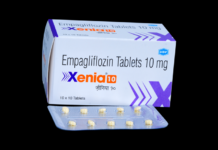1. Look at the big picture when designing individual process steps
Having a broad view of the entire production process and how the different process steps interconnect lets you find new ways to improve operations.
It is first when you start looking at how the individual process steps affect each other that you can optimize the whole. Sometimes taking a step back inspires new, smarter ways to combine equipment, as shown in the example below.
Scaling up production, not cost
When a producer of organic acids was scaling up from demo plant to full-scale production, Alfa Laval’s engineers designed a cell-removal system that improved yield and cut both installation and operating costs.
The obvious choice would be to scale up the process used in the demo setup where the broth was processed in two steps. First it passed through a high-speed separator where the cells were removed, and then it was purified in a second step using cross-flow membrane filtration. Just scaling up the existing design would have resulted in major investments and high operating costs.
Combining process steps to cut costs
Alfa Laval’s engineers proposed a solution where the two steps are combined into one. Since the amount of cells in the broth is relatively low, it is possible to first run it through a membrane filtration stage where the product is recovered. The concentrate (cells and fluid) then passes through a high-speed separator where the cells are removed. The high-speed separator in this setup is specially designed for handling liquids with a high concentration of cells.
The clear fluid from the separator is led back to the membrane stage where the product is recovered. To avoid the build-up of accumulated fines that haven’t been removed by the high-speed separation step, the membrane stage has a unique design and an automatic control system that regulates its operation.
The key benefits of this design are significantly lower investment costs and energy consumption as well as improved yield. The highly concentrated biomass resulting from centrifugation also minimizes the amount of water used for diafiltration and the need to remove additional water later in the process.
| Results | ||
| High-speed separators (HSS) | Traditional process with separate Steps | New process with combined steps |
| Required number of HSS | 10 | 2 |
| HSS energy consumption | 100% | 20% |
| HSS service cost | 100% | 20% |
| HSS price | 100% | 22% |
| Ultrafiltration system (UF) | ||
| Number of loops in the system | 7 | 8 |
| UF area | 100% | 110% |
| UF energy | 100% | 80% |
| UF service cost | 100% | 90% |
| UF CIP cost | 100% | 100% |
| UF price | 100% | 100% |
| Overall yield | ≈ 97,5% | ≈ 98,4% |
























